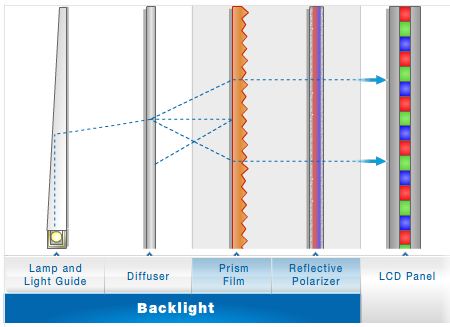CCFL Versus LED: Is There A Downside To Going Green?
With the display market quickly transitioning to LED backlighting, are we losing anything in the move away from CCFL? Sure, LED is supposed to be greener, with richer contrast and color...but is it? Before you jump to conclusions, check out our review.
A Question Of Backlighting
Out with the old, in with the new. LED backlighting is now all the rage in monitor design—and why not? Apple made LED technology the golden child of green tech when the company announced in 2007 that it would move to LED backlights and drop traditional cold cathode fluorescent lamp (CCFL) backlighting in its products. The target was mercury, a key ingredient in fluorescent lighting tubes.
The other side of going green is consuming less power, and monitor vendors practically trip over themselves to make lofty claims of electricity savings. Viewsonic, for example, notes a 50% benefit for its VX2250wm-LED. Moreover, those who value their investments could point to NEC, which proclaimed that LED technology would double the longevity of a monitor backlight from 25 000 hours with fluorescent to 50 000 hours.
Without question, there’s a lot about LED to commend it as a greener technology than fluorescent. Surprisingly, though, few (if any) people have stopped to ask what the relationship is between power savings and image quality. Is there a relationship? We always hear that LED monitors have far better contrast and better color, but is this true, and is there a price to be paid for that superior image?
The widespread transition from CCFL to LED got under way in earnest in 2007. Today, LED pricing has virtually reached parity with CCFL, and the trend is clearly in LED’s long-term favor. We’re not saying this is a bad thing. We only wonder if today, while you still have a choice between the two backlight technologies, if there is still a compelling reason to opt for the receding choice.
Get Tom's Hardware's best news and in-depth reviews, straight to your inbox.
-
nforce4max I am going to get such a monitor later this year. Imagine the leap from CRT to Led LCD.Reply -
Ragnar-Kon I personally can't wait until the OLEDs manufacturing process becomes cheaper. Having seen Sony's new OLED displays at this year's NAB in Vegas, I can say they are VERY VERY impressive.Reply -
scook9 I know that I have been rocking a pair of Gateway FHD2400's for a few years now and love them as they meet all my needs and have never left me wantingReply -
g00b Ummm ... LED? They are all LCD :).Reply
"Ultimately, we’d pick LCD for media consumption, but we’d pick CCFL for editing work where detail and accuracy are paramount. LCD is more fun to watch; CCFL is more reliable." -
theshonen8899 Basically the differences are very dramatic right? I'm gonna sound like a hippie for this but I'd definitely go for the greener option. Just being polite for our future generation is all.Reply -
wrxchris May not be too relevant here considering that this article was based around image quality, but as a gamer, I'm still plenty satisfied with my trio of 25.5" Asus TN monitors. Yes, they bleed a bit of light around the edges and the colors may not be very accurate, but they handle fast moving images with no problems and only cost $750 for the set. And my favorite feature is the 16x10 aspect ratio, which is becoming quite hard to find these days; not sure why people are so willing to give up vertical screen space.Reply
